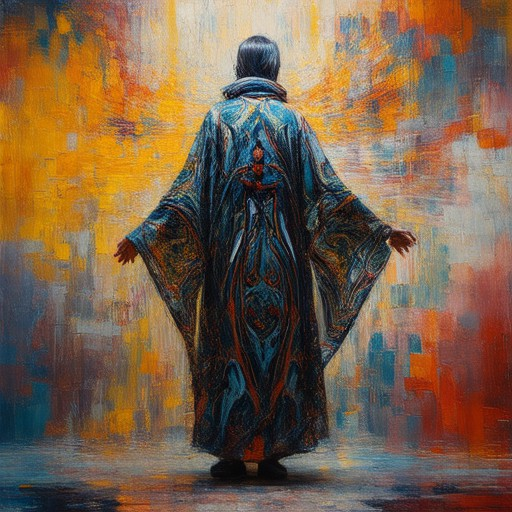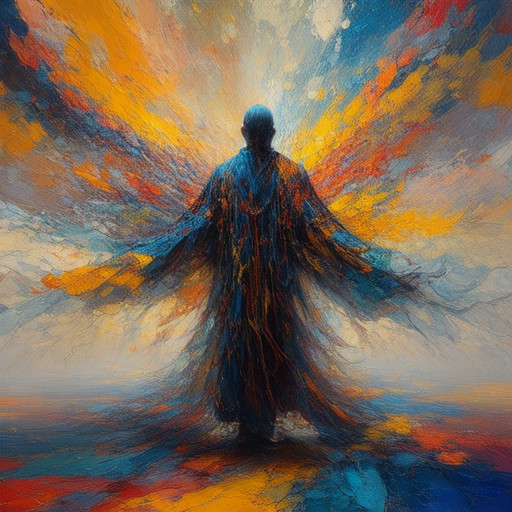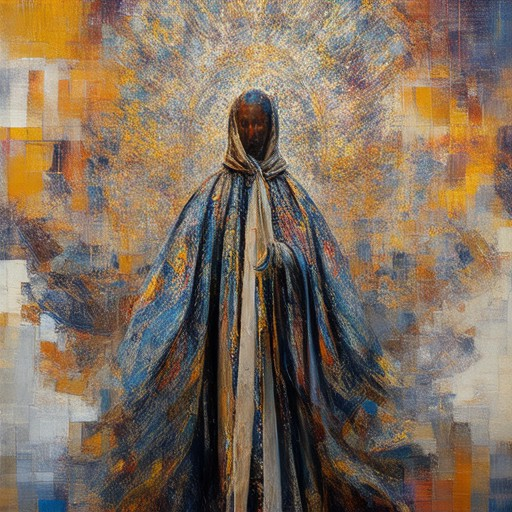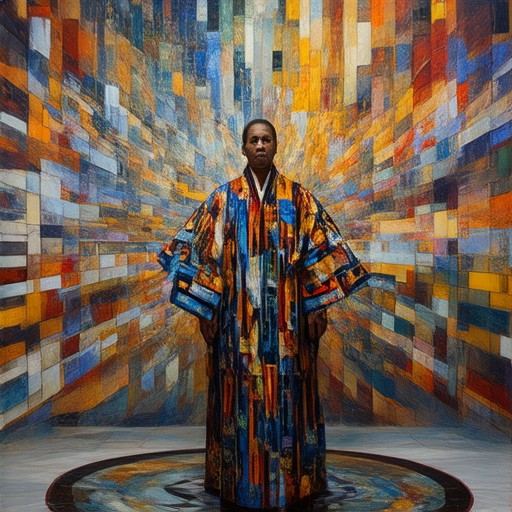Exploring the multifaceted realm of creative approaches in art offers a gateway to understanding the diverse techniques, theories, and methodologies that define contemporary artistic expression. From traditional mediums to innovative digital formats, creative approaches in art serve as the foundation for crafting unique works that resonate emotionally and intellectually. Whether delving into the abstract brushstrokes of abstract art or the meticulous realism of photorealism, these approaches reflect the boundless creativity that drives artistic innovation. This exploration not only sheds light on the principles governing creative arts but also delves into the theories shaping artistic movements, offering insights into how creativity is both defined and applied across different contexts. By examining case studies and real-world applications, this article aims to illuminate the transformative power of creative approaches in art, revealing their profound impact on education, therapy, and cultural expression.

Four Approaches to Art
The art world encompasses a wide range of approaches, each offering unique perspectives and techniques. Here are four primary ways people engage with art:
1. Traditional Art Approach
Traditional art often refers to classic forms of expression, such as painting, sculpture, and photography. This approach emphasizes skill mastery and adherence to established conventions. Artists focus on perfecting their craft, often studying timeless techniques passed down through generations. The goal is to create works that resonate with universal themes and inspire emotional connections.
2. Contemporary Art Approach
Contemporary art is characterized by its departure from traditional mediums and styles. It frequently incorporates new technologies, such as digital art, video installations, and performance art. This approach often challenges societal norms and explores current issues, making it highly dynamic and reflective of our times. Artists experiment with unconventional materials and push boundaries to create thought-provoking pieces.
3. Conceptual Art Approach
Conceptual art prioritizes ideas over physical execution. Artists may use non-traditional materials or abstract forms to convey their messages. This approach often involves storytelling, philosophy, or social commentary. Conceptual artists focus on the meaning and narrative behind their work, sometimes omitting visible craftsmanship to highlight the idea itself.
4. Street Art Approach
Street art is an evolving form that blends public art with urban culture. It typically appears in public spaces, such as walls, bridges, and public buildings. Street artists use graffiti, murals, and other techniques to create visually striking pieces that often reflect the energy and identity of a community. While traditionally seen as illegal, street art has gained recognition for its ability to transform public spaces and spark conversations.
Exploring these approaches allows artists to express themselves uniquely, contributing to the diverse landscape of artistic expression. Whether traditional, contemporary, conceptual, or street-based, each method offers a distinct perspective on creativity and artistry.
What Are the Three Approaches to Art?
Art encompasses a vast spectrum of creative expressions, each rooted in unique methodologies and philosophies. Here are the three primary approaches that define contemporary artistic practices:
-
Humanistic Approach :
This method emphasizes the subjective experience of the artist, focusing on personal expression and emotional resonance. Artists often explore themes of self-discovery, authenticity, and the human condition. Techniques such as gestural painting, intuitive drawing, and abstract expressionism thrive under this framework. -
Psychodynamic Theory :
Influenced by Freud’s psychoanalysis, this approach examines the unconscious mind’s role in creativity. Artists may delve into repressed desires, fears, or past traumas to uncover hidden motivations behind their work. This method often manifests in surrealism, where dream-like imagery prevails. -
Cognitive Behavioral Art Therapy :
Rooted in cognitive-behavioral therapy, this approach focuses on problem-solving and logical thinking. Artists engage in structured exercises to analyze and solve visual problems systematically. This method is particularly effective in genres like still life painting and architectural illustration.
Each approach offers a distinct lens through which art is created and understood, reflecting the diversity of human thought and expression. By exploring these methods, artists can unlock new dimensions of creativity and meaning in their work.

Techniques in Creative Arts
Creative arts encompass a wide range of disciplines and mediums, each requiring unique techniques to bring ideas to life. Below are some common techniques used across various forms of creative expression:
- Painting : This involves the use of paint on surfaces such as canvas, paper, or wood. Techniques include oil painting, acrylic painting, watercolor, and digital painting.
- Sculpture : Sculptors create three-dimensional forms using materials like clay, marble, resin, or metal. Methods include carving, casting, and modeling.
- Photography : Photographers capture moments and stories through cameras and digital tools. Techniques include portrait photography, landscape photography, and experimental photography styles.
- Printmaking : Printmakers create images on paper through processes like lithography, etching, screen printing, and relief printing.
- Digital Art : Digital artists use software and technology to create artwork, ranging from traditional styles to digital illustration and 3D modeling.
- Fine Art : Includes traditional mediums like drawing, sketching, and mixed media. Artists often experiment with textures and layers to convey emotions and narratives.
- Crafts : Handmade items such as pottery, textiles, jewelry, and furniture require precision techniques like wheel throwing, knitting, and lapidary work.
These techniques allow artists to express their creativity and tell unique stories. Whether working with traditional materials or modern tools, the goal remains to transform inspiration into meaningful art.
Tips for Mastering Creative Techniques
Exploring new techniques can enhance your artistic style. Here are some suggestions to help you grow:
- Study Masters : Analyze works by renowned artists to understand their techniques and approaches. We recommend exploring Artful Journey for valuable insights and resources.
- Experiment Freely : Don’t fear failure. Try different materials and methods to see what works best for your projects.
- Seek Inspiration : Look at nature, culture, and everyday life for fresh ideas. Our platform provides daily inspiration to spark your creativity.
- Join Communities : Collaborate with fellow artists and share techniques. Visit our community section for networking opportunities and feedback.
By mastering these techniques and continuously learning, you can unlock new dimensions in your creative journey. Explore tutorials and guides on our site to elevate your skills.

The Creative Theory of Art
The creative theory of art posits that art is inherently tied to human creativity, serving as a medium for self-expression and cultural expression. This theory suggests that art transcends mere representation or technique, emphasizing the transformative power of imagination and innovation.
Key Art Theories Explained
-
Mimetic Theory
-
Mimetic theory focuses on art as a means of imitating reality. According to this perspective, art reflects the world around us, offering audiences a window into existence. Artists use this theory to capture scenes, emotions, and experiences that resonate with viewers.
-
Expressive Theory
-
Expressive theory centers on the idea that art serves as a vessel for emotional and psychological expression. This theory suggests that artists create to communicate feelings, thoughts, and inner states, often translating complex emotions into tangible forms.
-
Formalistic Theory
- Formalistic theory examines the structural and aesthetic elements of art, such as color, texture, shape, and composition. This approach prioritizes the technical aspects of art, focusing on how these elements contribute to the overall impact of a work.
Creativity in Art
The creative theory of art integrates these perspectives, highlighting creativity as a fundamental driver of artistic expression. Creativity involves the ability to think innovatively, explore new ideas, and push boundaries, resulting in unique artworks that challenge conventional norms.
By combining mimetic, expressive, and formalistic approaches, the creative theory of art acknowledges the multifaceted nature of art. It underscores that art is not confined to a single interpretation or method but thrives on diversity and experimentation.
For further exploration of these concepts, visit our Art Theory section, where we delve deeper into the complexities of artistic creation and interpretation.
What Are the 4 Theories of Creativity?
The concept of creativity has been explored by various psychologists and researchers, leading to several theories that attempt to explain its mechanisms and dimensions. Below are four prominent theories that shape our understanding of creativity:
- 1. Creative Product Theory (Graham) – Proposed by John Graham in 1956, this theory focuses on the creation of unique and valuable products. It emphasizes the importance of generating ideas that are both novel and useful.
- 2. 4Ps Theory of Creativity (Torrance) – Developed by E. Paul Torrance in 1961, this theory suggests that creativity involves four essential elements: Person, Process, Product, and Press (or environment). These factors interact to influence the outcome of creative efforts.
- 3. Cognitive Theory of Creativity (Sawyer) – Keith Sawyer’s cognitive theory posits that creativity arises from the interaction of domain knowledge, expertise, and innovative thinking. It highlights the role of mental frameworks in generating new ideas.
- 4. Evolutionary Theory of Creativity (Dawkins) – Richard Dawkins’ evolutionary approach views creativity as a mechanism for solving problems and surviving in changing environments. He suggests that creative ideas can be seen as variations that confer adaptive advantages.

Understanding the Four Creative Arts
The term “creative arts” encompasses a broad spectrum of activities that stimulate imagination, creativity, and self-expression. These arts include various disciplines that allow individuals to explore their unique talents and express themselves in meaningful ways. Below is a breakdown of the four primary creative arts:
1. Visual Arts
Visual arts involve the creation of visual media, including paintings, sculptures, photographs, and digital art. These arts require skill, patience, and a strong sense of composition. Examples include:
- Drawing
- Painting
- Sculpture
- Photography
- Digital Art
Visual arts often serve as a therapeutic outlet, allowing individuals to process emotions and develop motor skills.
2. Performing Arts
Performing arts involve the presentation of works through live performances, such as music, dance, and theater. These arts demand precision, timing, and emotional connection with the audience. Key components include:
- Musical Performance
- Dance
- Theater and Drama
- Choreography
Performing arts contribute to cognitive development by sharpening memory, attention, and problem-solving abilities.
3. Literary Arts
Literary arts encompass written forms of expression, including poetry, prose, plays, and scripts. These arts allow individuals to communicate ideas, tell stories, and evoke emotions through words. Examples include:
- Poetry
- Prose (Novels, Short Stories)
- Plays and Scripts
- Journal Writing
Literary arts foster critical thinking, empathy, and imaginative thinking.
4. Applied Arts
Applied arts refer to the use of creative skills in practical contexts, such as design, architecture, and crafts. These arts bridge creativity with functionality, often leading to innovative solutions. Examples include:
- Interior Design
- Fashion Design
- Crafts
- Architecture
Applied arts encourage innovation and adaptability, making them highly valuable in diverse fields.
Conclusion
The four creative arts—visual, performing, literary, and applied—each offer unique opportunities for personal growth and expression. Engaging in these arts can enhance cognitive, emotional, and social well-being, making them invaluable in both personal and professional settings. Explore these arts to unlock your creative potential and discover the joy of self-expression.




0 Comments